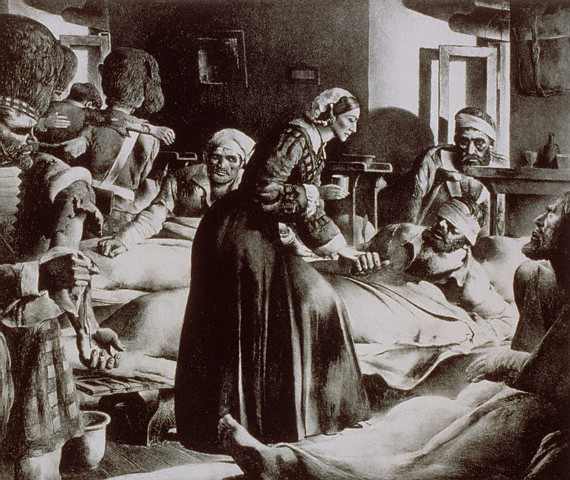“Nurse of the Mediterranean”, “Florence Nightingale”. These terms are no coincidence and were not invented by some nationalist spinmeister in an effort to boost our “pride” in our country. As Maltatoday picks up on public sentiment and reports that three Maltese patients were moved out of the ITU to make way for injured Libyan persons (you can sense Saviour puffing behind this bit of news), it would do all of us a favour to calm down a little and have a look at the numbers behind all this fuss.
To me the crucial bit of the Maltatoday article is the part that reports the number of Libyan patients threatening to cause havoc with our health care facilities. Given the fuss that has been kicked up by the insensitive NIMBYISTS on one hand and by the superproud heroes of nationalist persuasion on the other you’d have thought we were talking of Lampedusa Thousands. Hah. The real number is 16. Sixteen. That’s a kindergarten class (I think).
Let’s take the hands of time and turn them back a century and half ago. It’s November 1854 and there’s a war in the Crimea. That’s far, far away in Maltese provincial terms but since we were then under the administration of the British Crown we could not afford to ignore the geopolitical realities beyond San Dimitri point. The Crimean War gave the world the Charge of the Light Brigade, familiarity with the word Balaklava and Florence Nightingale. It was also the reason that Malta became, for the first time under British occupancy “the nurse of the Mediterranean”. Before that Malta had already played host to the Knights Hospitaller which is not simply a decorative adjective but an indication of the vocation of the Knights of St. John as medics. Hence the Sacra Infermeria.
But back to the Crimea and Malta. Here is Mr C Savona Ventura in an article I found quickly (not much time for research here) on the net describing Malta’s hospital role and the grand plans by Florence Nightingale herself to design a hospital in Malta. What is immediately striking is the request from Britain to set up to receive 10,000 (that’s ten thousand) war wounded on the island.
The Crimean War of 1854-56 served as a turning point in military medical administration. During the Crimean War Malta served as an outpost to treat wounded soldiers. The Malta Times wrote “Orders were received here from England to prepare quarters for 10,000 men. Several localities are being fitted-up; among others, the Lazzaretto and adjoining Plague Hospital, where it is said there is room for 1000 men, and the Dockyard lofts where as many men can be housed. Convents will be used if absolutely required, but not otherwise.” The first wounded soldiers arrived from the Crimea in November 1854 [17]. (…)
Florence Nightingale in her book Notes on Hospitals first published in 1859 took up the proposal of a new military hospital in Malta. In the 3rd edition of her book dated 1863, Nightingale suggested that a new General Military Hospital should replace permanently the Valletta Station Hospital. (C. Savona Ventura – Military Hospitals in Malta)
If anyone has the time to find the actual figures of how many wounded were treated in Maltese hospitals in World War I and during the Crimean War it should help give us more of a sense of perspective to the political fuss that is being kicked up here.
During the First World War, like the Crimean War period, Malta served as a “Nurse of the Mediterranean”. From the Gallipoli campaigns 2500 officers and 55400 troops were treated in the Maltese hospitals, while from the 1917 Salonika campaigns 2600 officers and 64500 troops were treated. The years of the conflict thus required the significant augmentation of hospital beds for injured and sick troops. The number of beds in the Valletta Military Hospital were augmented from 26 beds to 340 and later to 440 beds. This augmentation was achieved by renovating disused wards and bringing the sanitary and medical facilities up to date. The Valletta Station Hospital served as a sorting base for the wounded arriving in the hospital ships prior to their being transferred to the other 30 hospitals and camps scattered over the Islands. (also from C Savona Ventura – Military Hospitals in Malta)
* this post relies heavily on information gathered from the article “Military Hospitals in Malta” by C. Savona Ventura available here.

